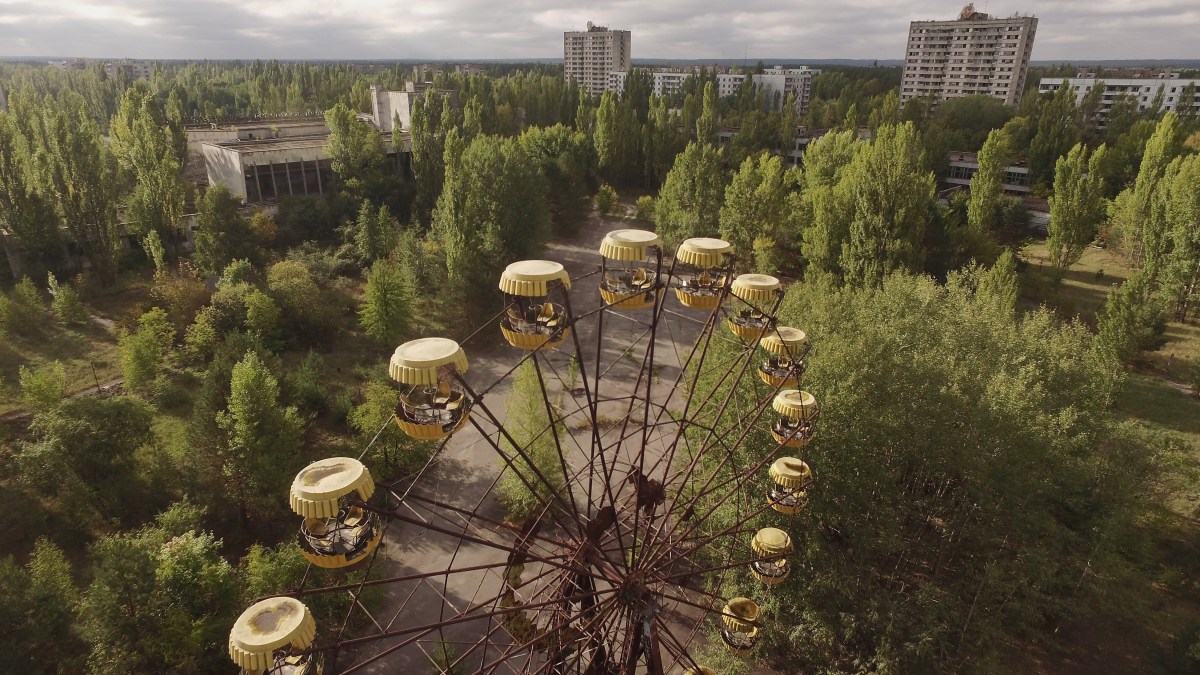On this day in 1986, the world’s worst nuclear disaster occurred at the Chernobyl Nuclear Power Plant in Pripyat, a Ukrainian city in the former Soviet Union. Today, the city is a ghost town, located at the center of the “exclusion zone,” which is still uninhabitable. See Pripyat and a snapshot of the lives affected by the Chernobyl meltdown below. For more information on the accident, click here.
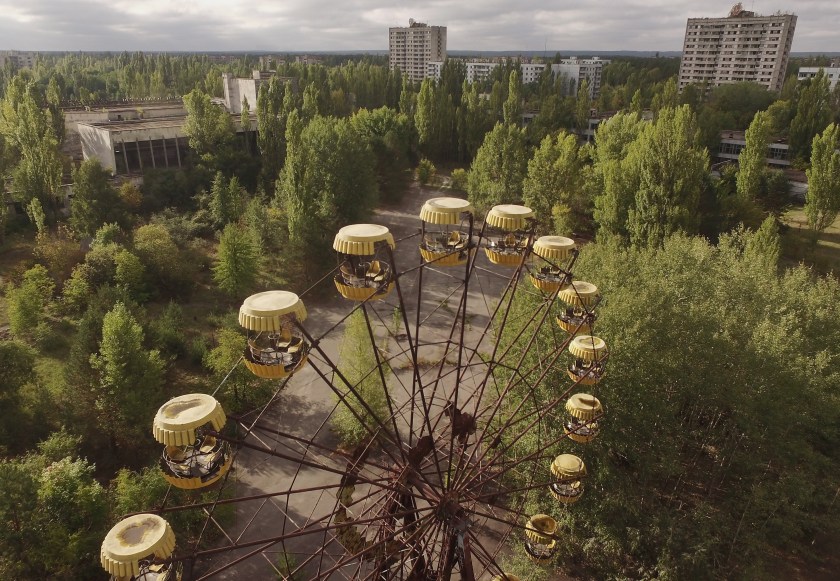
In this aerial view an abandoned ferris wheel stands on a public space overgrown with trees in the former city center on September 30, 2015, in Pripyat, Ukraine. (Sean Gallup/Getty Images)
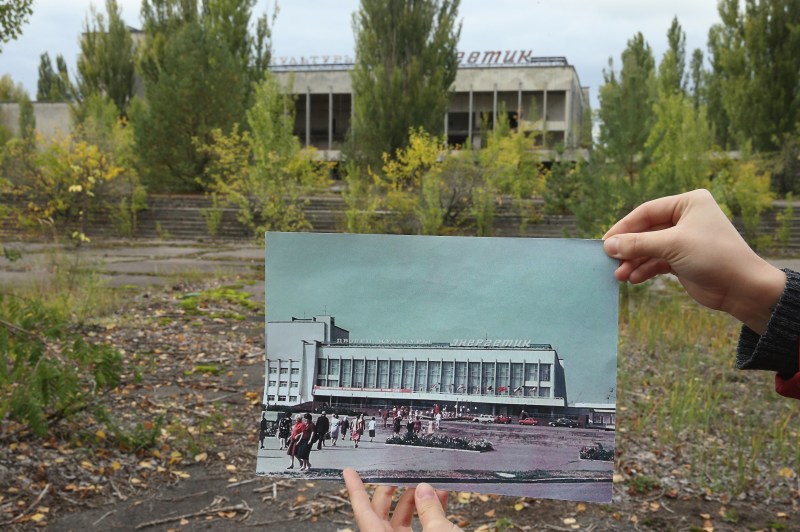
An assistant holds up a photo showing the city of Pripyat’s main square and the “Energetik” cultural center before 1986 at the same site that today is abandoned and overgrown with trees on September 29, 2015, in Pripyat, Ukraine. (Sean Gallup/Getty Images)
Getty Images
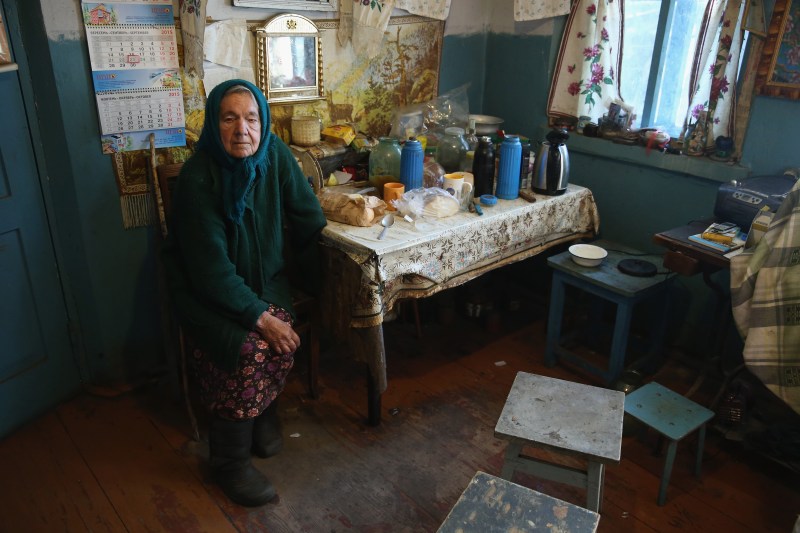
Marya Kindrativna, 80, sits in the house she shares with her husband Ivan Semenyuk inside the Chernobyl Exclusion Zone on September 30, 2015, in Parushev, Ukraine, which lies 8 miles from the former nuclear power plant. (Sean Gallup/Getty Images)
Getty Images
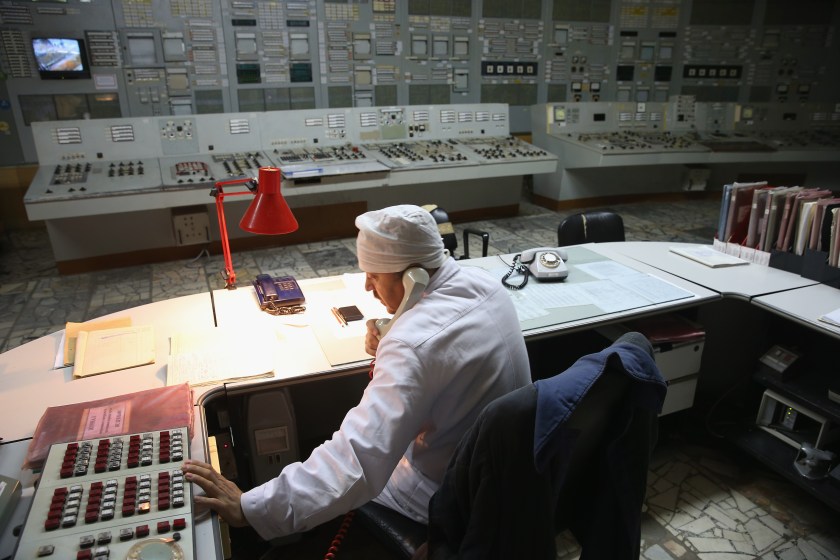
A worker makes a phone call in the control room of reactor number two inside the former Chernobyl nuclear power plant on September 29, 2015, near Chernobyl, Ukraine. The Chernobyl plant is currently undergoing a decades-long decommissioning process of reactors one, two and three, which continued operation for years following the accident at reactor four. (Sean Gallup/Getty Images)
Getty Images
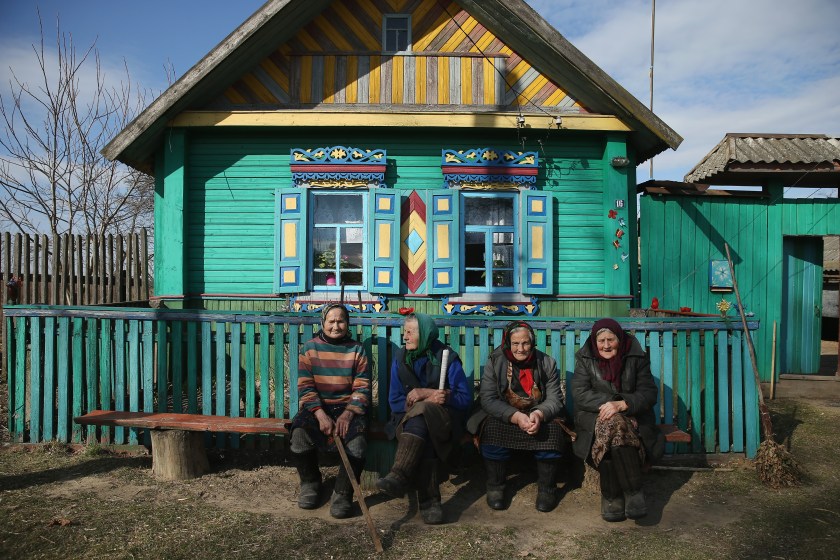
Elderly women sit next to a traditional house in the village of Pokats on April 4, 2016, near Chachersk, Belarus. Chachersk and Pokats, both located in southeastern Belarus, are in a zone designated as still contaminated to varying degrees with radiation from the 1986 Chernobyl nuclear disaster, especially cesium-137. (Sean Gallup/Getty Images)
Getty Images
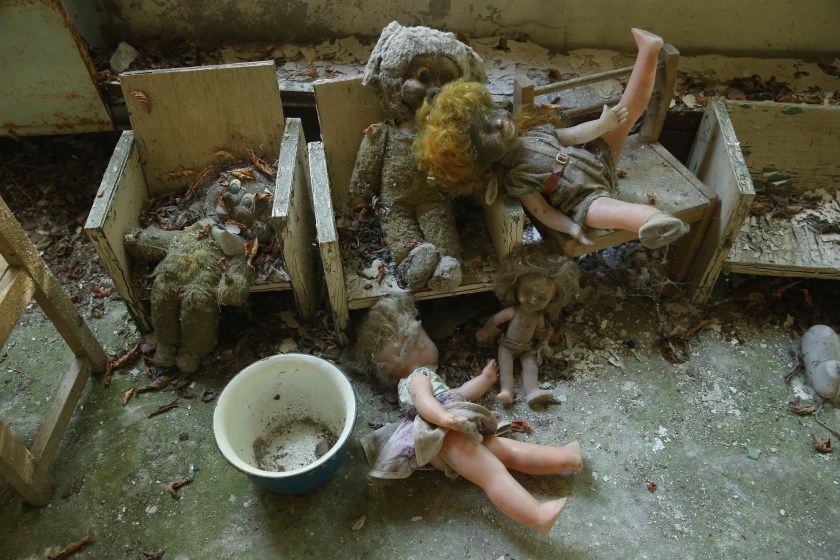
Dolls and stuffed animals lie in the “Zlataya ribka” (“Golden little fish”) abandoned kindergarten on September 30, 2015, in Pripyat, Ukraine. (Sean Gallup/Getty Images)
Getty Images
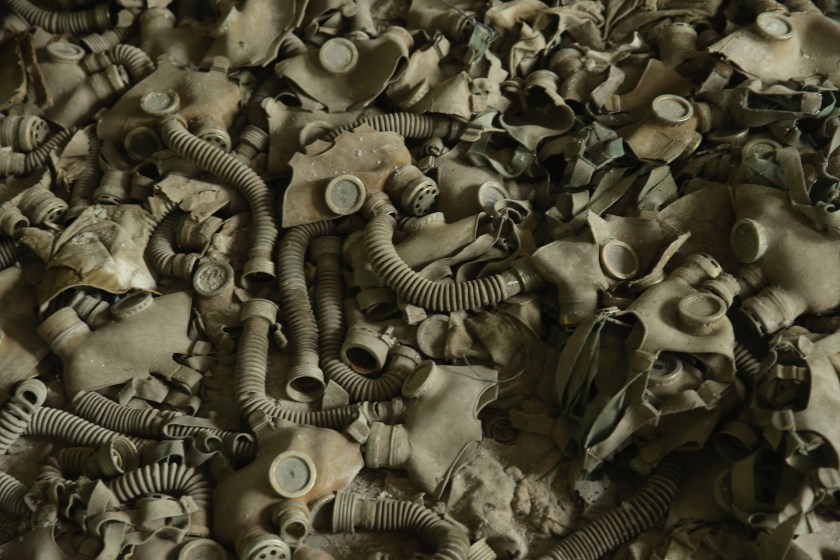
Cold War-era gas masks once common in the former Soviet Union lie strewn on the floor in a classroom of abandoned School Number 3 on September 30, 2015, in Pripyat, Ukraine. (Sean Gallup/Getty Images)
Getty Images
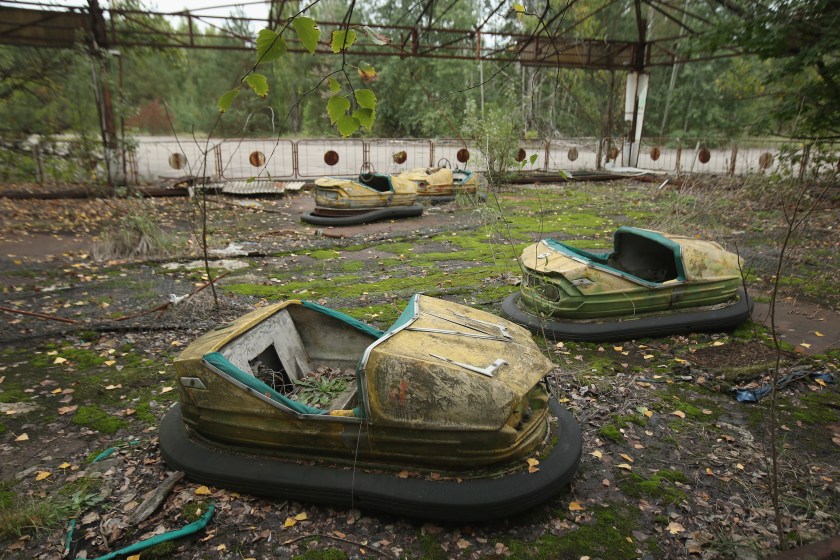
Bumper cars stand in an abandoned amusement park on September 29, 2015, in Pripyat, Ukraine. (Sean Gallup/Getty Images)
Getty Images
This article was featured in the InsideHook newsletter. Sign up now.
